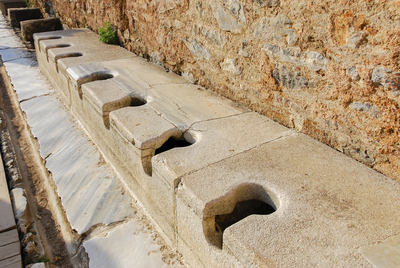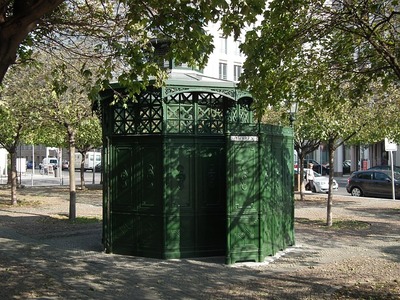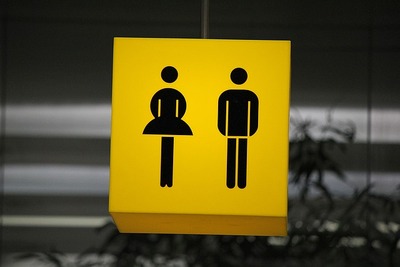A Deep Dive into the History of Public Toilets
Ah, the public toilet – have you ever paused to consider the intriguing history behind these humble conveniences? In this article, we'll take a whirlwind tour through the history of public toilets, uncovering the origins of our modern-day restrooms and the many transformations they've undergone throughout time. So, buckle up and get ready to flush away any misconceptions you may have about this essential piece of infrastructure!
A Brief History of Public Toilets
From Ancient Civilizations to the Middle Ages
Would you believe that the history of public toilets dates back thousands of years? Indeed, it does! Ancient civilizations such as the Egyptians, Romans, and Greeks were way ahead of their time when it came to public sanitation.
- Ancient Egyptians: Pharaohs and peasants alike benefited from the Nile's life-giving waters, which they used in primitive public toilets.
- Roman Empire: The Romans were known for their elaborate public bathhouses, and they even had communal latrines where citizens could socialize while taking care of business.
- Ancient Greece: The Greeks also had public latrines, often situated near their famous gymnasiums and public squares.

However, as the Roman Empire crumbled, so too did their dedication to public sanitation. During the Middle Ages, public toilets were few and far between, with people resorting to chamber pots and communal ditches to relieve themselves. It wasn't until the Renaissance that the situation began to improve.
The Renaissance and the Age of Exploration
As European cities began to flourish and populations grew, the need for better sanitation became more pressing. During the Renaissance, a few cities, such as Paris and London, started to introduce rudimentary public toilets. These facilities were often nothing more than holes in the ground with wooden planks to sit on, but they were a significant step forward in the history of public toilets.
- Paris: The city of lights led the way with public latrines known as "pissoirs," which could be found along the streets.
- London: Meanwhile, Londoners made use of "garderobes," small rooms with holes that were often built into the walls of bridges.
The Industrial Revolution and the Birth of Modern Public Toilets
As the Industrial Revolution brought rapid urbanization, the need for improved public sanitation became even more critical. The 19th century saw the dawn of the modern public toilet, with several significant advancements taking place.
- Sir John Harrington: In 1596, this English courtier invented the flush toilet, which he fittingly called "The Ajax."
- Alexander Cumming: This Scottish inventor patented the S-trap in 1775, a crucial component of modern toilets that prevents sewer gases from entering the bathroom.
- George Jennings: In 1851, during the Great Exhibition in London, this innovative Englishman introduced the first public pay toilet, complete with flushing toilets and handwashing facilities. During the exhibition, 827,280 visitors paid one penny to use them; for the penny they got a clean seat, a towel, a comb and a shoe shine. "To spend a penny" became a euphemism for going to the toilet.(1)

The Rise of the Public Restroom
By the early 20th century, public restrooms began to pop up in many cities around the world, often in train stations, department stores, and theaters. These facilities provided a much-needed solution to the growing demand for sanitation in urban areas. As public awareness of hygiene increased, so did the popularity and necessity of public restrooms.
- United States: In the early 1900s, public restrooms became increasingly common in American cities, with facilities for both men and women.
- Europe: European cities also saw a rise in public restrooms, often adopting a pay-to-use model similar to George Jennings' original design.

The Evolution of Public Toilet Design
As the history of public toilets continued, so did the evolution of their design. A focus on cleanliness, accessibility, and user comfort has driven many innovations in public restroom facilities.
- Self-cleaning toilets: These high-tech restrooms, which first appeared in the late 20th century, automatically clean themselves after each use, providing a more hygienic experience for users.
- Accessible facilities: In recent decades, there has been a push to make public restrooms more accessible to people with disabilities, resulting in the creation of larger, more accommodating stalls.
- Gender-neutral restrooms: To accommodate diverse populations, many public restrooms now feature gender-neutral facilities, making them more inclusive and welcoming for all.
Frequently Asked Questions about the History of Public Toilets
When were the first public toilets invented?
The concept of public toilets dates back thousands of years to ancient civilizations like Egypt, Rome, and Greece.
Who invented the flush toilet?
Sir John Harrington, an English courtier, invented the flush toilet in 1596.
When did public restrooms become widespread?
Public restrooms began to appear more frequently in urban areas during the 19th and early 20th centuries, driven by urbanization and a growing awareness of the importance of hygiene.
What are some innovations in public toilet design?
Some noteworthy innovations in public toilet design include self-cleaning toilets, accessible facilities for people with disabilities, and gender-neutral restrooms.
How has the history of public toilets influenced modern restroom facilities?
The history of public toilets has shaped modern restroom facilities by emphasizing the importance of cleanliness, accessibility, and user comfort. This has led to many advancements in design, technology, and inclusivity.
Conclusion
The history of public toilets is a fascinating tale of innovation, perseverance, and adaptation to the ever-changing needs of society. From the primitive latrines of ancient civilizations to the modern, high-tech restrooms we enjoy today, public toilets have come a long way. As our cities continue to grow and evolve, so too will the public restrooms that serve them. The next time you find yourself in need of a public toilet, take a moment to appreciate the long and storied history behind these essential facilities. Who knows what the future holds for the humble public restroom?

History of public toilets is full of innovation and progress
As you've seen, the history of public toilets is full of innovation and progress. Today, Danfo is at the forefront of the public restroom revolution, providing cutting-edge solutions to meet the ever-changing demands of modern society.
Are you ready to contribute to the future of public sanitation? Together, let's reshape the world of public toilets and create a cleaner, more accessible environment for all.





